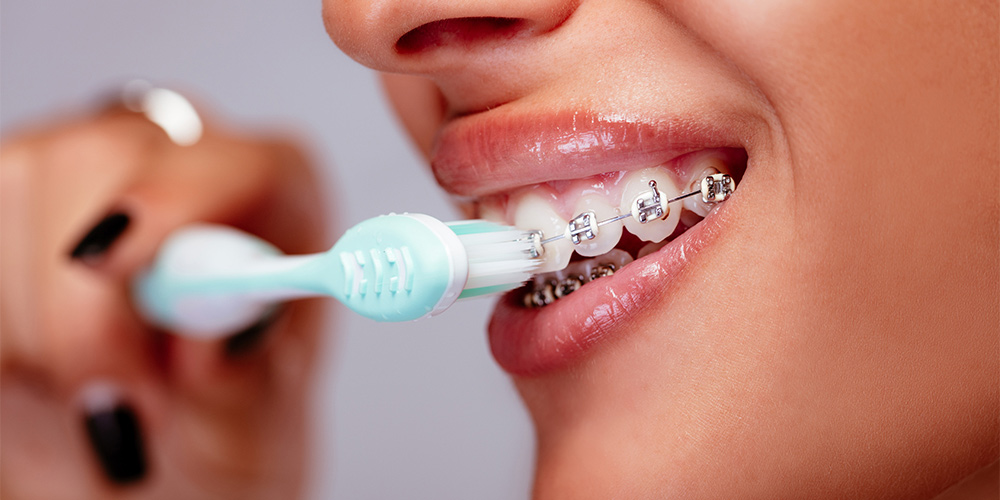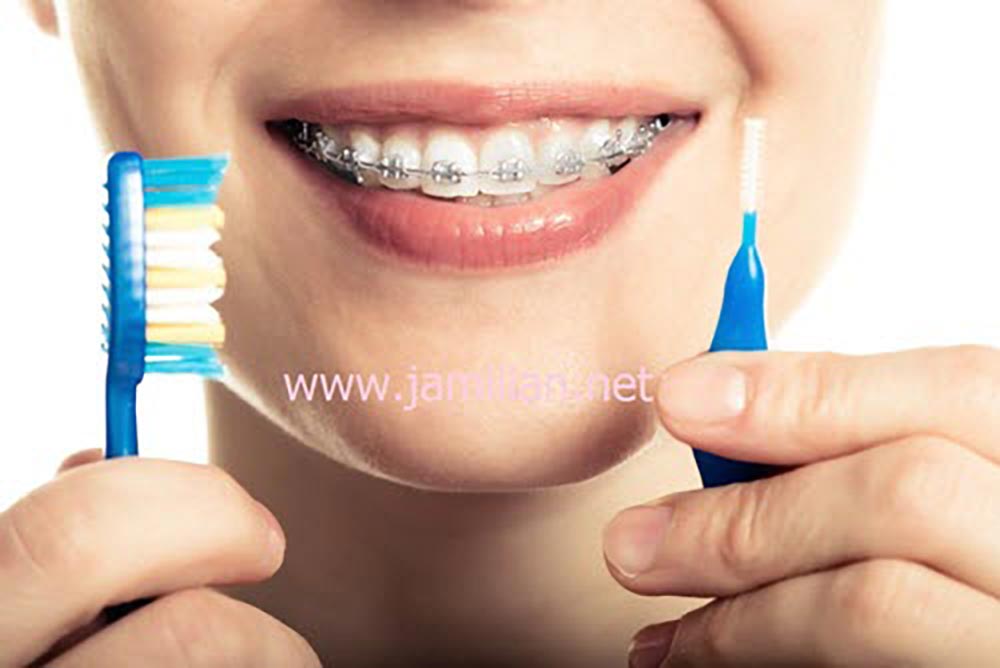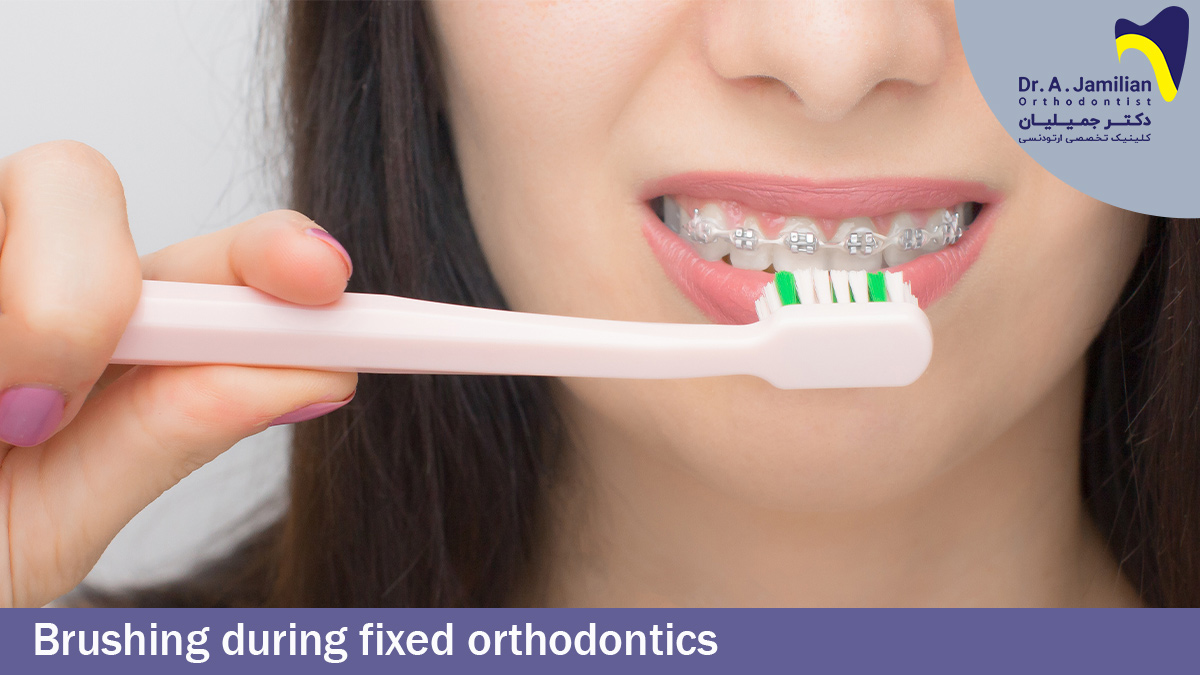If you have fixed braces, you should learn how to properly brush your teeth during the treatment. Patients with braces, their teeth become more vulnerable to bacteria and decay during the treatment. Thus, orthodontists believe patients should be more careful about their oral hygiene. If you’re looking to finish your treatment with flying colors and get healthy aligned teeth, learn how to clean your fixed braces while you have them.
Firstly, you might want to pick a proper orthodontic toothbrush. Get into the habit of closely following your dentist’s advice during your treatment and schedule for your doctor visits regularly. Here we cover the key points in how to brush fixed braces properly.

As mentioned earlier, oral hygiene should be taken seriously during the fixed orthodontics treatment, however, there are many questions that preoccupy most patients. How should they maintain the necessary hygiene? How should they brush their teeth after the orthodontic treatment? How should braces and archwires be cleaned? This section addresses such questions to let patients have fewer concerns and further awareness during orthodontic treatments.
The correct way of brushing with fixed orthodontics
According to orthodontists, brushing your teeth with fixed orthodontics is different from the normal way. There are several points you need to consider while brushing with fixed orthodontics.
- Your teeth and gums are more sensitive during fixed orthodontic treatment periods and you have to use a soft brush.
- Hold your toothbrush at 45 degrees to your gums and begin brushing your brackets and teeth. Try to stay on each tooth for about 10 seconds and brush each tooth with a circular motion.
- Push your toothbrush gently on the brackets and wires on your teeth in order to reach between them and slowly move your toothbrush to clean the brackets and wires thoroughly.
- Orthodontists recommend using toothpastes with fluoride to brush your teeth with fixed orthodontics. These toothpastes clean all the bacteria and microbes and reduce tooth decay and formation of cavities.
- Your gums are also very sensitive during fixed orthodontic treatment and as they are exposed to bacteria,. Therefore, you can gently brush your gums with a special brush your orthodontist prescribes for this purpose.
- Another important point for patients is using interdental brushes that are used to clean the spaces between teeth and between wires and teeth. To use these brushes, put the brush gently between your teeth and the wires and clean the space between by slow vertical movements.
- You need to brush your teeth using a toothpaste with fluoride after every meal while observing the points mentioned above. Therefore, you need to brush three times a day and try to brush before going to sleep as there is a higher risk of cavity formation and tooth decay throughout the night.
You can complete your fixed orthodontic treatment period successfully by observing the points above.

Features of best toothbrushes for orthodontic treatment
It is necessary to use toothbrushes with soft brushes for easy and gentle movement on the teeth and gums. These types of toothbrushes have short and hard middle bristles to clean the orthodontic braces and wires carefully. Orthodontic toothbrushes have tall and round brush heads and clean teeth and gums thoroughly. You can also use electric toothbrushes to brush with fixed orthodontics. However, using electric toothbrushes it must be in a mode that would not harm the wires and brackets.
The handle of the toothbrush should fit in your hand easily so that you feel comfortable using it. In addition, it should be noted that changing your toothbrush in time helps oral and dental hygiene substantially.
When to change your toothbrush during orthodontic treatment
Patients are often advised to change their toothbrushes every six months and get new toothbrushes as their bristles decay gradually. Orthodontic patients will generally realize that the bristles on their toothbrushes tend to turn stiff sooner than usual.
Naturally, braces and archwires are harder than teeth, and a toothbrush tends to overwork to clean the teeth. Patients may need to change their toothbrushes every four months.
Brushing During Fixed Orthodontics FAQ
1-What is the most important criteria in choosing toothbrushes for fixed orthodontics?
The most important point is the softness of the brush. Other points include the size and handle of the toothbrush and access to different parts such as the space between teeth. Moreover, good toothbrushes do not cause gum sensitivity.
2-Can I use an electric toothbrush with fixed orthodontics?
Electric toothbrushes can help, particularly children, clean brackets and wires and encourage maintaining oral hygiene. You need to set your device on a mode that would not move or harm the wires and brackets.
3-How can I clean my teeth if I don’t have access to a toothbrush?
If there was no access to a toothbrush and you could not brush after a meal, swill some water around your mouth and rinse to remove the food stuck in your teeth.
4-Is the type of toothbrush important during orthodontic treatment?
No, careful and correct brushing is always more important than the type of toothbrush.
5-Can I use dental floss with orthodontics? And how?
Yes. Guide the floss between your teeth, under the wires and gently move it up and down in a C formation. Repeat this motion for all teeth. Do not run the dental floss between your teeth with a sawing motion.






